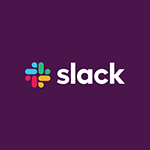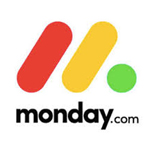The Best Communication Software When Working from Home
For many businesses, working from home is no longer a luxury but a necessity if they are to continue to operate during the COVID-19 pandemic. Businesses across the globe are having to quickly adopt flexible remote working policies. For those who have already embraced collaborative communication technology, shifting to a remote work environment should be straight forward. For those who haven’t, we’ve curated a list of our top 5 favourite pieces of software to allow productivity to continue to flow while at home.

1. Zoom

Often described as the swiss army knife of video conferencing, Zoom is both loved and loathed in equal measure. Combining HD video with important features such as screen sharing, content sharing, local recording and webinars, it’s an obvious choice for businesses looking for an end-to-end conferencing solution. Zoom lifted their limit on free accounts in response to the crisis and can theoretically support up to 1,000 participants in one single meeting, meaning its scalable for all business sizes. Although we would suggest smaller zoom meetings for a more personal touch.
2. Trello

Trello is an easy to use tool that lets your whole team create, design, and assign tasks in a straightforward intuitive interface. You create individual “cards” for every task, and sort them by department, assignee, or team. As the completion of a task progresses, team members can slide these cards from one category to the next, initiating automatic updates to the rest of the team. Trello’s collaborative tool lets your whole team stay informed on the progress of various tasks and upload files, in a way more engaging than emails.
3. Slack

Slack is a communication management app that is incredibly well suited to remote working. You can create easy to use team channels which allows you to interact and send direct messages to team members. Slack lets you drag-and-drop files, bookmark messages, and pin documents for quick reference. This app cuts down on internal emails since it’s quicker, more efficient, and more user-friendly. It’s easy for individuals and teams to get started with the free tier, and there is the option to expand as required. It’s best placed to help home workers quickly recreate the sort of in-person chat and collaboration they had in the office, at home.
4. Google Meet

Google Meet is a widely used alternative to other video conferencing software such as Zoom. The business-aimed tool brings conversations to life with photos, emoji, and even group video calls for free. You can keep your team connected with enterprise-grade video conferencing built on Google’s robust and secure global infrastructure. Meet’s video meetings are encrypted in transit and their array of default-on anti-abuse measures keep your meetings safe from unwanted guests. You can even join Meet video calls using Skype for business, making it popular for businesses with external prospects and clients from around the world.
5. Monday.com

Monday describes itself as The Work Operating System. We’d describe it as a powerful project management platform that helps teams of all sizes track, manage, and execute various tasks and initiatives. To do so, Monday combines a slick and intuitive UI with automation capabilities that make it a breeze to use. In short, it’s a collection of highly customised spreadsheets in which everyone on a team logs the tasks they need to complete and updates them with status reports and other relevant information.
Of course, there are plenty of other software solutions out there that may be more suitable for your business needs, but we hope the above were enough to get you started.
Fancy a chat?
Get in Touch
If you’re looking to make your next event the next big thing, no matter how big or small, we’d love to hear from you.
Start a conversation with us by using the contact form on the right, or give us a call.
